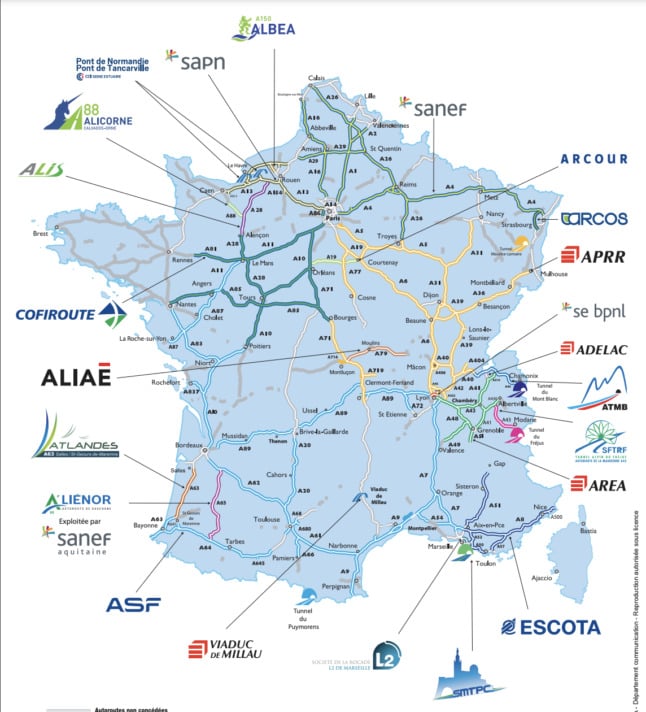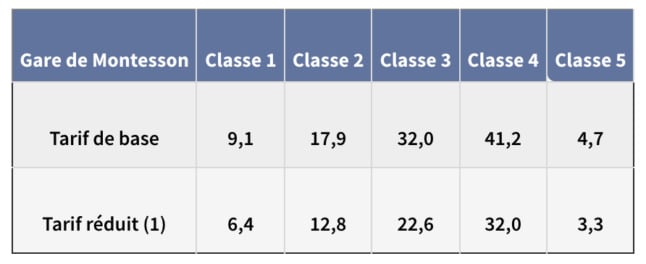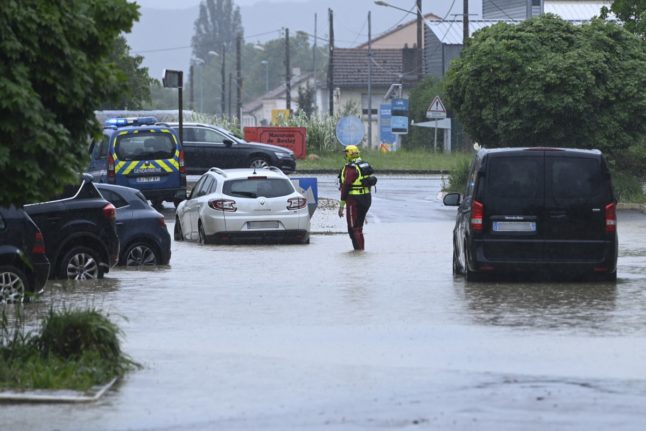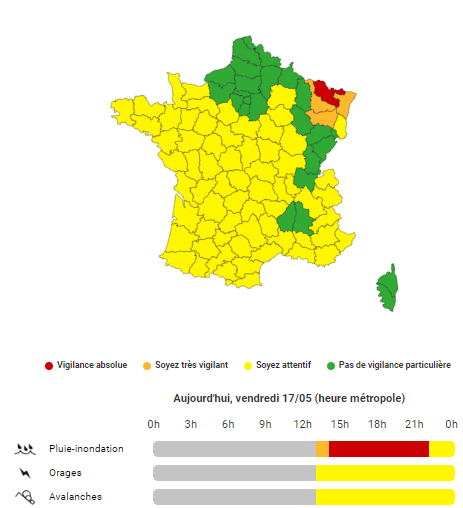French motorways are generally managed by private companies who hold lease agreements with the government.
Toll-fees, the proceeds of which are partly used for maintenance costs, increase every year in-line with inflation.
From February 1st, autoroutes across the country will introduce higher toll-fees, but the degree to which drivers will experience increased costs depends what kind of vehicle they use.
Vehicles are broadly classified as follows:
- Class 1 (Light vehicles): these are cars and minivans. This class also includes vehicles pulling trailers with a combined height of no more than 2m and a gross vehicle weight (GVW) of less than or equal to 3.5 tonnes.
- Class 2: Large utility vehicles and camping cars
- Class 3: Heavy goods vehicles, coaches, other 2-axle vehicles, motorhomes taller than 3m
- Class 4: Vehicles taller than 3m with a GVW greater than 3.5 tonnes
- Class 5: Motorbikes, sidecars, quad bikes, three-wheeled motor vehicles
The next determining factor for how significant the price rise will be depends on which company is operating the road you use.
The management of roads is broken down as follows:

Cofiroute (mostly Centre-Val de Loire and Pays de la Loire)
Cofiroute operates the following roads: the A10 (Paris to Poitiers), A11(Paris-Le Mans and Angers-Nantes), A28 (Alençon to Tours), A71 (Orléans to Clermont Ferrand), A81 (Le Mans-Laval), A85 (Angers to Vierzon), and the A86 (Rueil-Malmaison to Vélizy-Villacoublay).
Class 1 vehicles using these roads will see a toll price increase of 1.896 percent.
Class 2 vehicles will see a 1.560 percent increase.
Class 3 vehicles will see a 2.5 percent increase.
Class 4 vehicles will see a 3.159 percent increase.
Class 5 vehicles will see a 0.620 percent increase.
The actual amount you are charged depends on how far drive on the road.
ASF (mostly Nouvelle-Aquitaine, Occitanie and Auvergne-Rhône-Alpes)
ASF runs more than 2,700 km of motorways including: the A10, A11, A16, A62, A63, A64 (La Pyrénéenne), A83 , A87, A837 , A20, A61, A66 (the Puymorens tunnel), part of the A68, A72, A89, Openly (ringroad around Lyon), A7, A8, A9, A46, A50, A51, A52 , A57 (the Toulon tunnel), A711, A75, A500, A501, A502.
READ MORE How hard is it to swap your driving licence for a French one?
All classes of vehicles using these roads will see toll-prices rise by 2.191 percent. The actual amount you are charged depends on how far drive on the road.
The exception to this is the A66 running through the Puymorens tunnel where vehicles will have to pay the following price, regardless of how far they have driven: €7.2 (class 1), €14.8 (class 2), €24.1 (class 3), €39.9 (class 4), €4.3 (class 5).
SANEF and SAPN (mostly northern France)
SANEF stands for the Société des Autoroutes du Nord et de l’Est de la France (The motorway company of the North and East of France). It comprises of the following motorways extending through the greater Paris Île-de-France region, Normandy, Picardie, Nord-Pas-de-Calais, Champagne and Alsace: A1, A2, A4, A16, A26 and A29.
Class 1 vehicles will see tolls increase on these motorways by 1.911 percent.
Class 2, 3, 4 and 5 vehicles will see tolls increase by 1.5 percent, 2.230 percent, 3.010 percent and 0.6 percent respectively.
SAPN is part of the SANEF group and operates the following roads in Ile-de-France and Normandy: the A14, A13 and the A29.
Class 1 vehicles on these roads will be charged an extra 2.119 percent.
Class 2, 3, 4 and 5 vehicles will see tolls increase by 1.511 percent, 2.079 percent, 3.060 percent and 0.594 percent respectively.
The actual amount you are charged depends on how far drive on the road.
The exception to this rule is at the Gare de Montesson and Gare de Chambourcy booths on the A14, where the following tarifs apply regardless of distance travelled.


APRR and AREA (mostly eastern France)
APRR is the second largest motorway operator in France, running a network of roads that connect Paris with Champagne-Ardenne, la Franche-Comté, la Bourgogne, la Lorraine, l’Alsace and the Rhône-Alpes region among others.
It operates the following motorways: the A5, A6, A19, A26, A31, A36, A39, A40, A42, A46, A71, A75, A77, A89, A404, A406, A432, A466, A714 and A719.
Class 1 vehicles operating on these roads will see a price increase of between 2.050 to 2.051 percent.
Class 2, 3, 4 and 5 vehicles will see price rises of 1.539 percent, 2.455 percent, 3,357 percent and 0.601 percent respectively.
READ MORE French polls support compulsory tests for drivers aged over 65
The actual amount you are charged depends on how far drive on the road.
People using the APRR operated tunnel, at Sainte-Marie-Aux-Mines in the Vosges mountains will need to pay a fixed tarif of: €6.3 (class 1), €9.8 (class 2), €17.5 (class 3), €29.3 (class 4) or €3.8 (class 5).
Another road network, known as AREA, forms part of the APRR group. Its nexus is found in the southeast of the country around Grenoble and Chambéry. Among the roads run by AREA are: the A41, A410, A43, A430, A48, A480, A49 and A51.
Class 1 vehicles using these roads will be subject to a up to a 2.061 percent increase in toll fees.
Class 2, 3, 4 and 5 vehicles will have increased fees of 1.558 percent, 2.262 percent, 3.079 percent and 0.498 percent respectively.
The actual amount you are charged depends on how far drive on the road.
ESCOTA (southeastern France)
Escota operates the following motorways in the southeast of France: the A8, A50, A51, A52, A57 and A520.
It is increasing fees for all vehicle types by 2.051 percent.
Other operators
STRF operates the tunnel at Fréjus in the Provence-Alpes-Côte d’Azur département; CEVM operates the viaduct of Millau in Occitane; ALIS operates the A28 from Rouen to Alençon; ARCOUR runs the A19 from Artenay to Courteney; ADELAC runs the A41 between Annecy (France) and Geneva (Switzerland); A’LIENOR runs the A65 between Langon and Pau in southwest France; Alicorne runs the A88 road between Caen and Le Mans; Atlandes runs the A63 which runs from Salles to Saint-Geours-de-Maremne; and ALBEA runs the A150 to the northwest of Rouen.
These operators will all introduce hikes to toll prices.
READ MORE UK introduces car sticker requirement for driving in France
The heftiest fees will be class 4 vehicle drivers. Those crossing the viaduct of Millau for example will have to pay €40.30 and those driving across the A28 may have to pay up to €86.70.
A full list of prices is available in the annexes of this official notice.
Exceptions
Vinci Autoroutes owns the following operators: ASF, Cofiroute, ESCOTA and ARCOUR.
The group has said that journeys of less than 50km along its roads will not be subject to the aforementioned price increases, with tarifs frozen – for now.
While France is set to introduce a frictionless motorway toll system by 2024, most drivers currently pay in cash or by card at motorway toll booths.
READ MORE France to introduce barrier-free motorway tolls by 2024
Vinci Autoroutes has introduced an e-badge that drivers can use to debit the cost of journey’s directly to their accounts rather than paying for journeys directly at toll booths. You can read more about the product here.






 Please whitelist us to continue reading.
Please whitelist us to continue reading.
Member comments